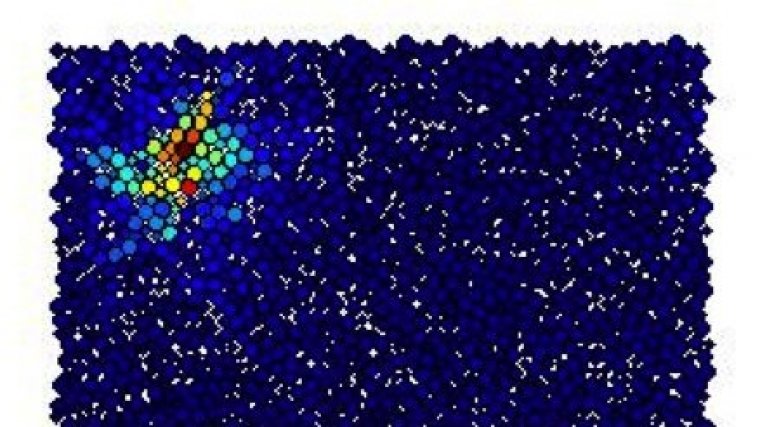| News / Tech News |
Materials, like metallic glass, can help us understand how cells break
NSF | MARCH 22, 2015
"Disordered" materials are so-called because they are made up of objects that are in total disarray. Their composition, whether of atoms, molecules, grains or cells, do not lie in a neat, orderly pattern, but, instead, are all jumbled up.

his image depicts a localized mode in a simulated disordered packing of 2,500 soft particles. Red are regions that vibrate a lot and blue regions vibrate very little. ![]()
Many of these disordered materials, metallic glass, for example, are exceptionally strong, stronger than other metals, which offers potential for many industrial uses. But they also are prone to failure, and often break.
An assistant professor of physics at Syracuse University is studying these materials, searching for the defects in each that produce a crack-like fissure called a shear band.
Insights from her research also could have important applications for biology, ultimately leading to possible future medical treatments, because disordered cells also exist in tissues, in developing embryos and in certain cancers.
Cancer cells are softer than other cells, and have different mechanical properties. If a cancer cell is softer, that make it easier to move through tissue and metastasize. If we could stiffen up that cell with a drug, maybe it wouldn't move anymore.
YOU MAY ALSO LIKE





